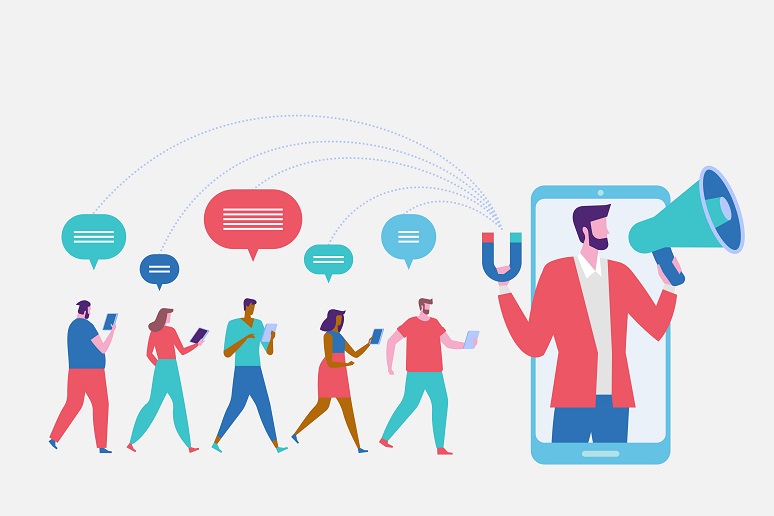Earlier this month, Twilio, a cloud communications provider,
published research from its third annual State of Customer Engagement Report. The annual report highlights the challenges business-to-consumer (B2C) enterprises face regarding consumer loyalty, trust, and digital fatigue.
Twilio relied on three primary resources to create its 2022 report, which included a total of 3,450 respondents from Australia, Brazil, Columbia, France, Germany, Italy, Japan, Mexico, Singapore, Spain, the U.K., and the U.S., with 200 to 500 respondents from each country.
In a conversation with No Jitter, Twilio Chief Customer Officer Glenn Weinstein explained what these enterprises must overcome to maintain consumer loyalty and trust, what characteristics define personalization, and how businesses can incorporate it to improve their engagement strategy.
What Does 2022 Look Like for Customer Engagement?
Five fundamentals of customer engagement emerged from Twilio’s study of consumer and B2C enterprises: Make the customer experience digital; make it personal; ditch your third-party data; close the trust gap between brands and consumers; and engage smarter. Companies that invested in digital customer engagement over the past two years experienced a 70% revenue increase. But while 75% of companies responded that they were doing a good job with personalized interactions, only 48% of consumers thought so, Weinstein said.
Make the Customer Experience Digital
One caveat: this has to be done right. B2C consumers feel overwhelmed by digital fatigue, and they’re quick to cut off companies that they perceive as time-wasters. Twilio’s survey demonstrated 56% of consumers would stop doing business with a company after a poor interaction. “What that means is B2C companies need to make interactions smarter and more relevant, not just add more interactions,” Weinstein said.
Digital fatigue is tied to bad customer service—the kind that’s not personalized and treats every customer like a machine, Weinstein said. To that point, the report states 18% of customers would rather lose Internet access or endure a sunburn than talk with customer support (ouch). Weinstein explained that this is why it makes sense to invest in tools and technology to offer personalized and efficient customer service.
Make the Customer Experience Personal
88% of B2C companies stated that they use personalization. This strategy relies on having knowledge from previous interactions and using that knowledge to improve future interactions. “When done well, customers appreciate a personalized experience because it shows that you respect your customer’s time and attention and listening to what they’re telling you,” Weinstein said. He added that a good personalization strategy starts with first-party data because you must collect information about each interaction you have with a customer.
84% of B2C companies report that they always or often personalize engagement with consumers. However, half of the consumers agree. Weinstein attributed this disconnect to what a brand defines as personalized engagement. “Some companies still think that all you have to do is start an email with “Dear [first name],” he said. “To be clear, consumers don’t consider that personalization if the rest of the email isn’t relevant.”
Weinstein used Vacasa, the vacation home rental company, as a counterexample. [Vacasa] incorporates insights from first-party data it collects using Twilio Segment, so homeowners and renters get really good, personalized offers. This [personalization] has increased its email engagement rates well above industry benchmarks. “Consumers can tell the difference quickly—they know if you really know them or you’re just faking it.”
Ditch the Third-Party Data
By the end of 2023, marketers will no longer be able to track customers online using third-party cookies. B2C companies struggle with trust because 81% are entirely or substantially reliant on third-party cookies—
even though they’ll eventually lose access to the data. Only 65% of consumers trust companies to use their data appropriately, Weinstein explained. “You’ve got to honor your consumers’ preferences and commit to using first-party data only for personalization.”
Close the Trust Gap
A trust gap emerges from Twilio’s data. 95% of B2C companies believe consumers trust their ability to protect data, but only 65% of consumers actually trust these companies. Twilio’s State of Customer Engagement Report 2022 shows 71% of consumers want better data privacy from brands, yet only 55% of companies believe this is what consumers want. Companies will continue to reap the benefits as long as they improve their ability to engage with customers in a personalized and trustworthy manner, Weinstein explained.
Engage Smarter
This area is where technology can help you. “The typical way to manage first-party data—especially at a large scale, is using a customer data platform (CDP). Then you use what you know about a customer to deliver a more tailored experience to them the next time,” Weinstein said. When asked how businesses can incorporate personalization into their engagement strategy, Weinstein used Amazon and Netflix as examples, two companies that have built their own CDPs.
“Another example of this is Intuit, which Weinstein disclosed is now using Twilio Segment to collect information on how TurboTax users use their product. “Intuit uses this info to customize the next interaction, and they’ve told us they’ve seen engagement rates more than double as a result,” he said.









